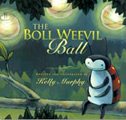 I've just started on a cover for a historical chapter book about a Korean girl. It's been really fun to research not only the costume of the Choson (or Joseon) Period but also the customs and ceremonies of that time era. Lasting for approximately five centuries, the Choson period consolidated its absolute rule over the land of Korea, encouraged the entrenchment of Confucian ideals and doctrines in Korean society, imported and adopted Chinese culture, and saw the height of classical Korean culture, trade, science, literature, and technology. However, the dynasty was severely weakened during the late 16th and early 17th centuries, when successive invasions by neighboring Japan and Qing China virtually overran the peninsula, leading to an increasingly harsh isolationist policy for which the country became known as the Hermit Kingdom.
I've just started on a cover for a historical chapter book about a Korean girl. It's been really fun to research not only the costume of the Choson (or Joseon) Period but also the customs and ceremonies of that time era. Lasting for approximately five centuries, the Choson period consolidated its absolute rule over the land of Korea, encouraged the entrenchment of Confucian ideals and doctrines in Korean society, imported and adopted Chinese culture, and saw the height of classical Korean culture, trade, science, literature, and technology. However, the dynasty was severely weakened during the late 16th and early 17th centuries, when successive invasions by neighboring Japan and Qing China virtually overran the peninsula, leading to an increasingly harsh isolationist policy for which the country became known as the Hermit Kingdom.I've also taken an interest in the aristocratic traditional costume of the time as well. The "hanbok" is the traditional Korean dress. It is often characterized by vibrant colors and simple lines without pockets. Although the term literally means "Korean clothing", hanbok today often refers specifically to Joseon Dynasty-style semi-formal or formal wear that is worn during traditional festivals or celebrations. The women's hanbok consists of a chima meaning a wrap-around skirt and jeogori which refers to a jacket. The ensemble is often called chima jeogori. The men's hanbok is comprised of jeogori and baggy pants called baji. Gwanbok is a Korean general term referring to all business attires of government officers given by government. There were several types of gwanbok according to status, rank, and occasion and they are very specific. Commoners were restricted by law as well as resources to cotton at best. The upper classes wore a variety of colors, though bright colors were generally worn by children and girls and subdued colors by middle-aged men and women. Commoners were restricted by law to everyday clothes of white, but for special occasions they wore dull shades of pale pink, light green, gray, and charcoal. Both males and females wore their hair in a long braid until they were married, at which time the hair was knotted: the man’s in a topknot sangtu (상투) on the top of the head and the woman’s in a ball just above the nape of the neck. Women of high social backgrounds wore wigs. The bigger the better!
I found a great site that helps me understand the layers of this multitude of cloth. Enjoy!
Here's the first few ideas for this cover.







4 comments:
They are both beautiful, but I LOVE the second one! Something about the lines of the girl, the sense of movement, is just lovely :)
I agree, and especially love her braid and cute little feet. Thanks for sharing your research- the complexities are fascinating.
Oh I so agree! Both are wonderful, but the second one has magic!!!
I'm so happy that you like 한복, as a Korean who like illustration so much. and I'm so in love with your paintings, too.
Post a Comment